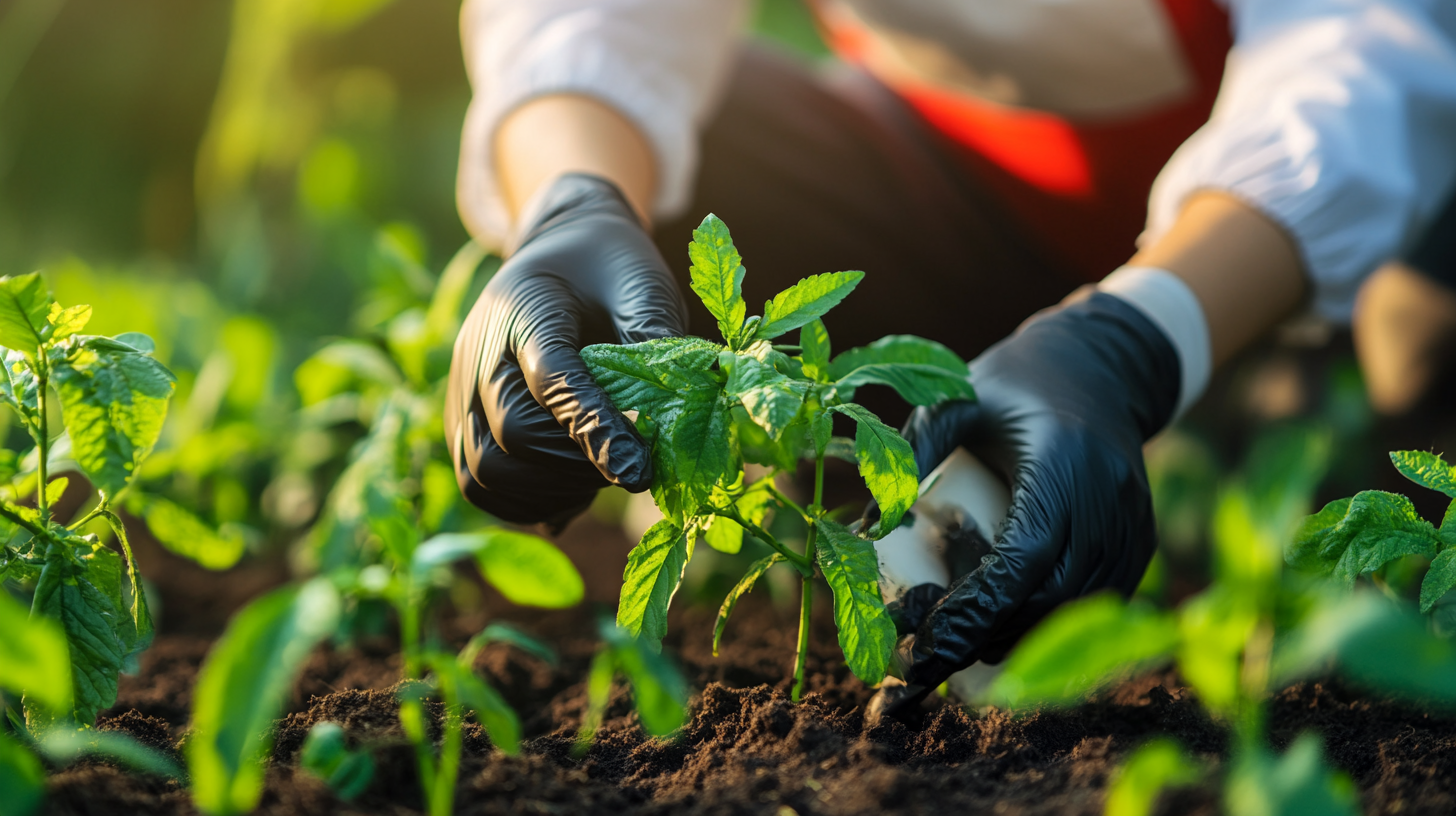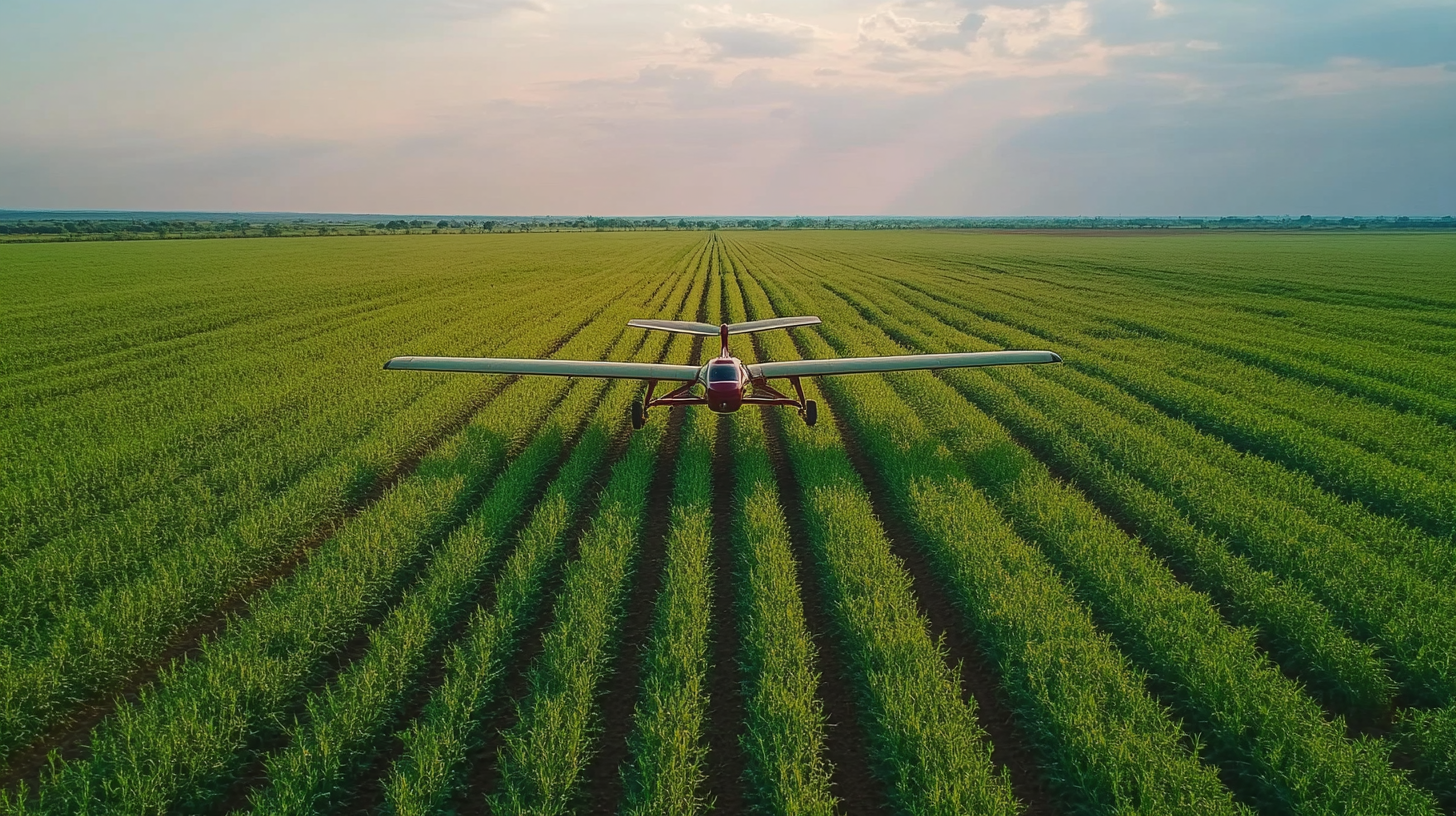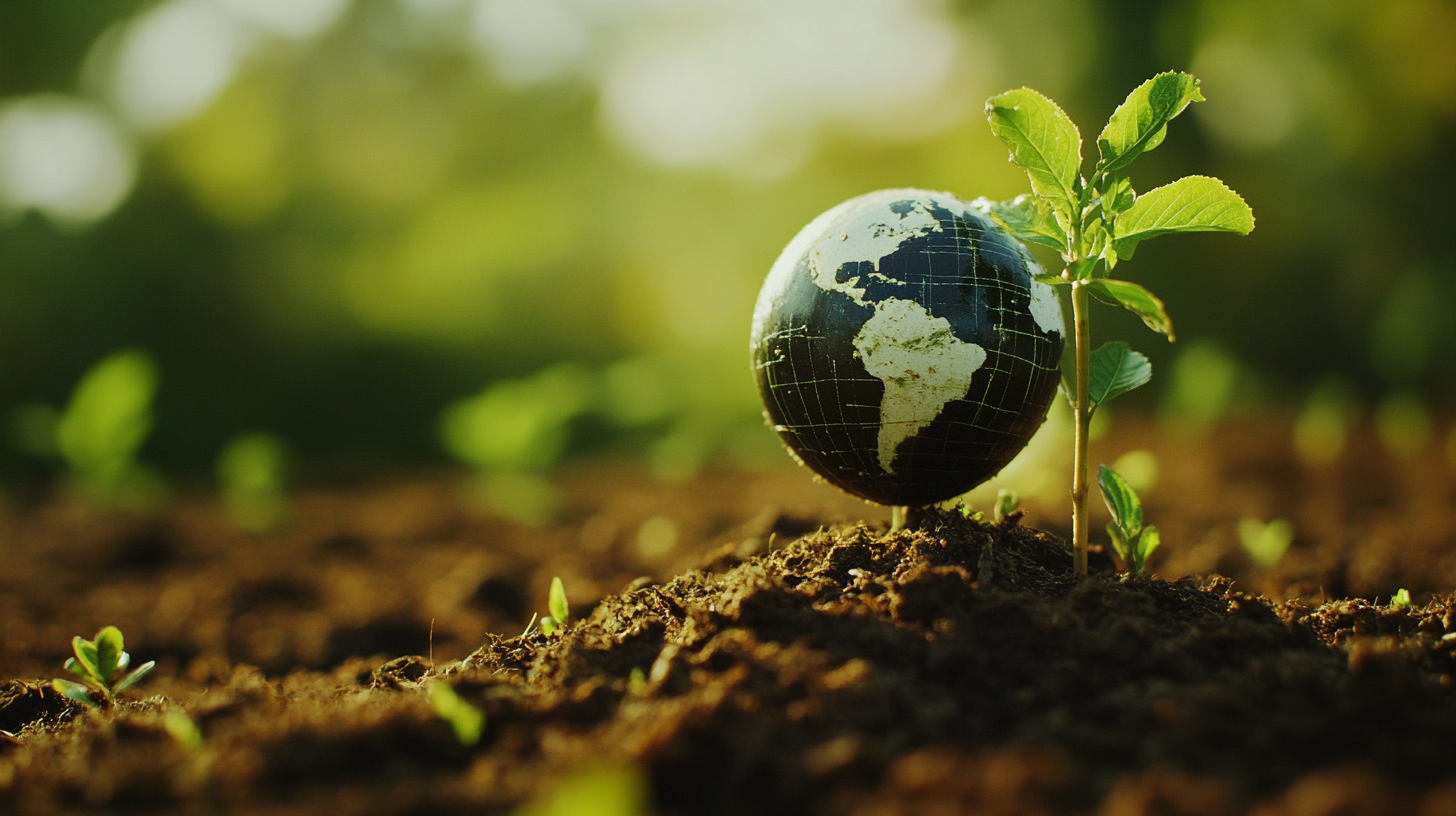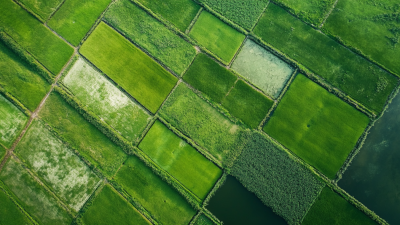 0551-68500918
0551-68500918 





The landscape of agriculture worldwide is changing under the pressure of stakeholders shifting from productive to more sustainable practices. According to Mordor Intelligence, the Global Crop Protection Market was worth USD 62 billion in 2020 and will rise towards about USD 90 billion by 2027. Crop protection procurement methods are then bound to find new avenues that can express high regard for environmental sustainability while agricultural productivity can stay above the threshold. And with green agricultural inputs becoming more in demand, businesses must adopt new ways of working with procurement that will benefit the land and ecosystems just as much as they benefit themselves.
Innovation Meiland (Hefei) Co., LTD. is leading that change in favor of Global Crop Protection. The company is committed to research and development of new pesticide products, formulations, and processes that bring solutions to the changing needs of the agricultural sector. The Mainland headquarters in the city of Hefei, China, is a center for state-of-the-art innovation that positions the company to play a vital role in formulating sustainable procurement strategies for the wise use and safe application of crop protection products. This strategy must ensure that our goals closely follow industry trends so that crop protection may flourish in the long run and exercise environmental stewardship.

Unless the definition of sustainable crop protection strategies is modified to suit the perspective of food production, a less stringent rating might be warranted in view of the increasingly complex global market. If environmental impacts are becoming more pronounced, it calls for the emphasis to be placed on methods of farming that go beyond only protecting crops and that sustain its ecosystems. Adoption of sustainable crop protection means also resorting to practices such as biological control, crop rotation, and resistant varieties to reduce dependence on Chemical Pesticides. Less reliance on chemical pesticides is in this light not only an avenue for the conservation of biodiversity, but also a way of keeping soils healthy over time so as to deliver sustainable agricultural productivity. Far more to reward sustainable crop protection strategies are their economies. Consumers are increasingly concerned about where their food comes from and how it is produced. Thus, businesses following sustainable practices are in a position to market their products in higher value markets and respond to our growing demand for responsibly sourced products. By engaging in sustainable practices, firms can demonstrate their commitment to sustainability, reinforcing brand loyalty, and more easily distinguish themselves from competitors in the marketplace. Sustainable crop protection strategies would entail further economic benefits. Overall profit margins would improve as farmers lower input costs from chemical treatment and such losses due to pests and diseases. Funding opportunities and partnerships with sustainability organizations can benefit the entirely agricultural supply chain. This is the best strategy to not only save the environment but also create a future for the market.

The procurement of crop protection products has a number of key problems in the global agricultural context. One of the foremost bottlenecks is the increasing complication of regulatory requirements from different regions. The report from the Food and Agriculture Organization (FA), for example, mentions that around 90% of countries with different registration processes for pesticides, which causes lagging time and even increase sourcing cost for product that is critical to sourcing. This disparity creates not only inefficiency but also lessens access to solutions that could help farmers enhance both yield and sustainability.
Another challenge is price volatility of raw materials with high consequences for procurement strategies. The International Fertilizer Association (IFA) reported that most key raw materials increased between 30% and 2021 and this increase in several important raw materials was followed by worldwide supply chain problems and geopolitical strife. Such fluctuations cause uncertainties for procurement teams, which need to have budgets and forecasted needs but usually have to apply an on-the-fly sourcing strategy that adapts to the prevailing market condition.
Moreover, concerns about sustainability are influencing purchasing practices in the crop protection sector. A study conducted by Global Forum on Agricultural Research and Innovation (GFAR) found that 84% of agriculture companies were focusing on sustainable sources to meet regulatory compliance alongside consumer demands. Therefore, this demands an extensive evaluation of suppliers with respect to the environmental impact and compliance with sustainability practices, thus complicating the process of procurement and increasing the level of due diligence required in supplier selection. These changes are bring innovative and flexible challenges to the future of crop protection success in sustainable procurement.

In the modern-day global crop protection scenario, building sustainable supplier relationships has become a paramount task. As corporates commit to an increasing extent towards becoming environmental stewards, fostering a partnership with those suppliers sharing such a commitment becomes critical. One possible way is to maintaining open lines of communication, enabling both parties to be on the same page, harmonizing their goals and expectations. This can be supplemented by holding regular check-ins and collaborative troubleshooting sessions, strengthening the bond between them and building a resilient supply chain that will better withstand adversity.
Another best practice is to weave sustainability criteria into the fabric of the procurement process. Companies should analyze prospective suppliers on their environmental performance, social responsibility, and governance. This way, sustainability in whose spirit the global standards have been framed is being actively stimulated, and it also spurs supplier innovation on transitioning their operations to greener methods. The recent 2025 DSG Global Supply Chain Innovation Forum emphasized that sustainable practices in the supply chain must be emphasized through collaboration and innovation.
Something more is leveraging data analytics to gauge supplier performance, which would allow more considered decisions. The monitoring of key sustainability metrics enables businesses to analyze which suppliers are outstanding and which require some assistance to improve their practices. By propping up supplier training and capacity development programs, companies could cultivate the ecosystem of sustainability throughout their supply chain that leads to growth and success for both sides in the ever-changing crop protection market.

A rapid evolutionary transformation is taking place in the sustainable crop protection and agronomy areas through innovative developments from technological advances. According to a recent report by McKinsey, advances in precision agriculture technologies such as drones and satellite imaging have a potential for saving as much as 20% of the pesticides. Enabling real-time monitoring of crop health, precision agricultural technologies facilitate intervention in careful instances that increase yield and reduce environmental impact.
The facts and figures support that artificial intelligence and machine learning combined in crop-protection approaches have turned around agriculture. According to the International Society for Precision Agriculture, the success of predictive analytics in pest forecasting becomes significantly more credible at over 80% accuracy- with an improved basis for better decision making in pest management. Through these agile solutions, farmers can be more proactive and informed in their application of when and how they will use crop protection measures, ensuring productivity and sustainability.
Again, the increasing trend to eco-friendly alternatives is shown by the Biopesticide Industry Alliance making a report on development of biopesticides and biofungicides. By the year 2026, the global biopesticide market is expected to be worth $4.14 billion, increasing significantly, mainly driven by consumer demand for sustainable farming practices. These products not only protect the non-target organisms from damage but help in creating a healthier eco- system that completely aligns with sustainability objectives that modern agriculture strives.
Purchasing decisions concerning crop protection at the international level must evaluate environmental and social impact. A recent report from the Food and Agriculture Organization indicates that sustainable agricultural practices can increase crop yield by 20% over traditional ones. This clearly highlights the importance of responsible sourcing, not only for productivity concerns but also to ensure that procurement processes meet the criteria for sustainable development.
On International Cooperative Day, we should acknowledge the role cooperatives play in fostering sustainable production and consumption. According to the International Cooperative Alliance, cooperatives account for 12% of the world's agricultural output. Procurement processes can give preference to engaging cooperatives to draw upon local knowledge and local resources and, thus, lower their environmental impacts by utilizing long-distance transportation. This diversion helps build community resilience, and it supports the fair sharing of benefits to all farmers.
The incorporation of environmental considerations into procurement can greatly mitigate the adverse impacts on ecosystems. A WWF study stated that sustainable sourcing can help in curbing greenhouse gas emissions by up to 30%. Companies could aid a circular economy by assessing suppliers not just in economic terms, but also on environmental and social performance. This change in procurement approach is one of the vital elements toward sustainable agricultural practices and complements the global quest for climate action and biodiversity.
Regulatory considerations are very important in the selection of crop protection practices within sustainable agriculture. An understanding of the regulations governing sustainable crop protection becomes all the more pertinent with increasing global food demand and the environmental challenges associated with conventional agricultural methods. The legislation that surrounds the sustainable use of crop protection agents forms a maze for farmers and agribusinesses. They need to find their way through hundreds of local, national, and international laws designed to ensure safe agricultural products and a healthy ecosystem.
One important area of regulation is pesticide and biopesticide assessments. It is a duty of those in charge of regulations to ensure that assessment is made on the safety of either of these against human health and environmental problems. Therefore, sustainable procurement practices must comply with regulations to ensure that only approved and responsibly sourced crop protection products are used. This is not only a means of keeping farmers compliant but also how to improve their marketing position; consumers are moving towards products that are certified safe and sustainably produced.
Perhaps the other regulatory encouragement for sustainable practices is innovation in crop-protection technologies. Such incentives and support for developing pest-management alternatives that can reduce reliance on chemical approaches can benefit companies engaged in sustainable procurement. Such measures may not only comply with regulations but will also contribute to a more resilient agricultural system to cope with the consequences of climate change and other emerging challenges. By understanding compliance and integrating it into the innovation framework, sustainable crop-protection will eventually prosper.
Sustainable procurement, mostly applied in global crop protection, defines success even more widely. Proper KPIs are needed to measure organizations' efforts in sustainability. KPIs set up can also be evaluated by companies for checking their progress towards environmentally friendly practices and at the same time monitor compliance with local and international sustainability standards.
For instance, the percentage of sustainably sourced materials in the procurement function is a KPI. This directly measures how far a company goes toward sustainability but also affects its supply chain decision-making by urging suppliers to act sustainably. A further example of KPIs worth tracking is carbon emissions from logistics and distribution, which provide insight into the company's environmental effects. These indicators help organizations understand areas that require correcting in order to align their activities with global sustainability.
Nevertheless, customer satisfaction is another important KPI within sustainable procurement. Engaging consumers about what types of products they consider to be sustainable can help businesses to fine-tune specific products and create demand for environmentally responsible solutions. These KPIs would eventually work as part of a bigger framework to equip the crop protection industry with a greater ability to deal with the complexities of sustainable procurement while maximizing overall environmental benefits.
Sustainable sojourn in global crop protection is going to be the order of the day. New strides, especially by big corporations like the Microsoft 2022 Environmental Sustainability Report, have brought much change to how industries, including agriculture, are handling the environmental footprint. Thus, businesses have discovered that such practices would end up giving long-term benefits from sustainability to planet and enhance their very future viability in most things they do. Although, with such strong adaptability also comes the crop protection sector, which is ever-alterable in terms of market conditions and regulatory measures. Technology has been new, and so is the paradigm shift to sustainable agriculture.
Extreme weather patterns, as manifestations of climate change, render the agronomy sector a very firm need for adopting climate-smart practices if food security always has to be assured. The pressure is laid for such transformation on agricultural practices through the UN findings, which called for contributions from the private sector to their sustainable goals aisle. An anticipated eight billion humans will inhabit the world; the weight on our farming systems will be cruel. Collaborations are being developed bringing companies into such arrangements as Sustainable Palm Oil Pathway to encourage countries such as Indonesia and China to produce and consume significantly saner palm oil resources.
Meanwhile, research and development focus on sustainable crop protection methods spearheading into revealing methods of tackling environmental challenges as well as economic ones. Restoration, commitment honed in ecosystems like wetlands, is critical in ensuring an agricultural future that is sustainable. This collective action, besides climate change mitigation, works toward improving biodiversity, critical for resilient food systems. Trends will be key to embracing in the future for successfully carrying sustainable procurement into crop protection.
Sustainable crop protection strategies include methods like biological control, crop rotation, and the use of resistant plant varieties that reduce reliance on chemical pesticides while protecting crops and ecosystems.
By reducing input costs associated with chemical treatments and minimizing crop losses due to pests and diseases, farmers can improve profit margins through sustainable practices.
Consumers are increasingly conscious of the origins and production methods of their food, so businesses that adopt sustainable strategies can enhance their marketability and meet the demand for responsibly sourced products.
Cooperatives contribute to sustainable production and consumption, leveraging local knowledge and resources to reduce environmental footprints and support equitable distribution among farmers.
It can significantly reduce negative impacts on ecosystems, potentially lowering greenhouse gas emissions by up to 30%, and contribute to a more circular economy.
Climate-smart strategies are essential for ensuring food security in the face of climate change, especially as the global population is expected to exceed 8 billion, putting pressure on agricultural systems.
Corporations are adopting sustainable procurement practices, acknowledging their benefits for the planet and for enhancing long-term operational resilience in agriculture.
The focus on research and development of sustainable crop protection methods, collaboration in sustainable palm oil pathways, and restoring ecosystems are key trends for addressing environmental and economic challenges in agriculture.
Partnerships that enhance sustainable practices, particularly in major producing and consuming countries, are vital for impactful change in the agricultural sector.
According to the FAO, implementing sustainable agricultural practices can lead to a 20% increase in crop yields compared to traditional methods, highlighting their importance for productivity and sustainability.





